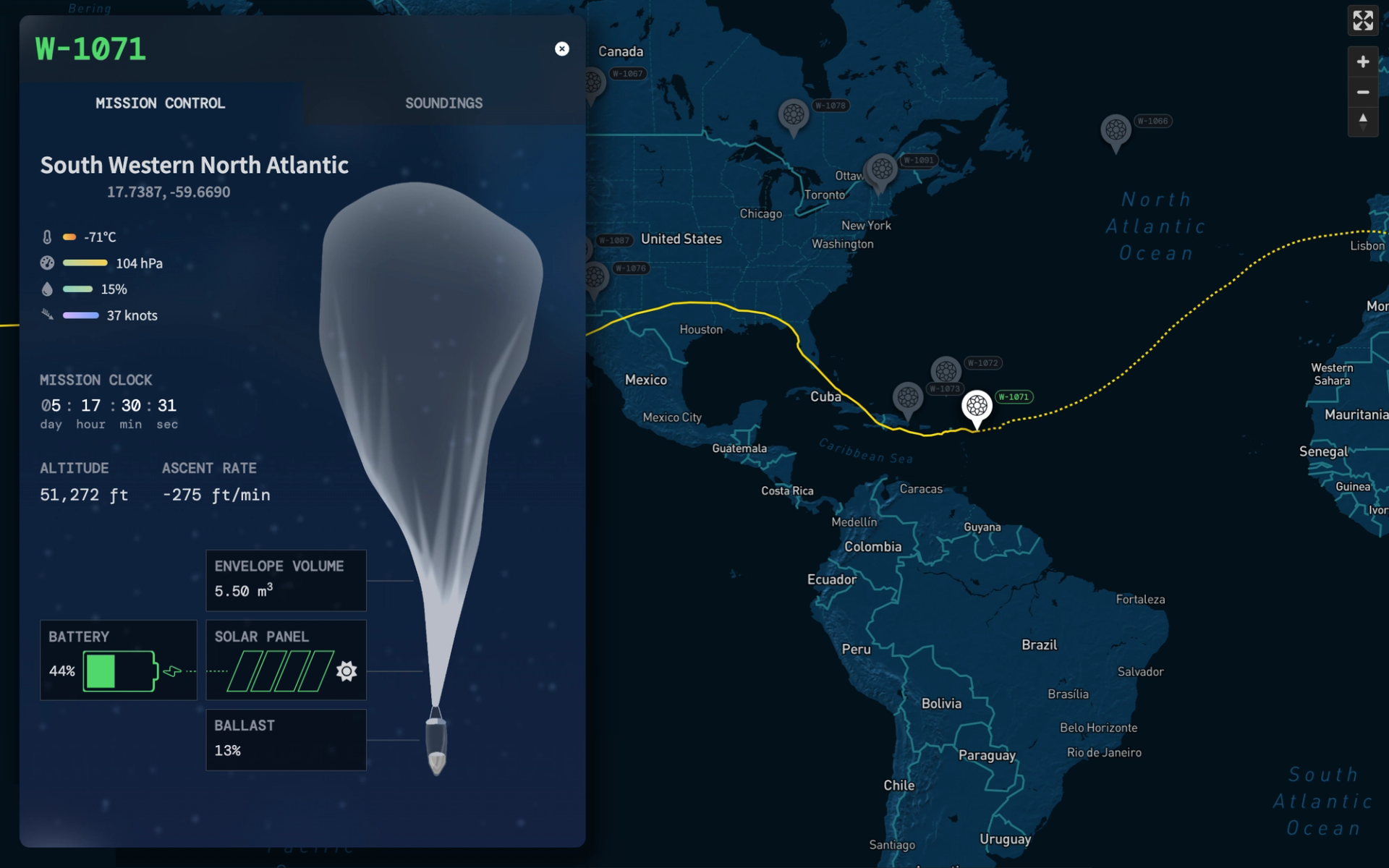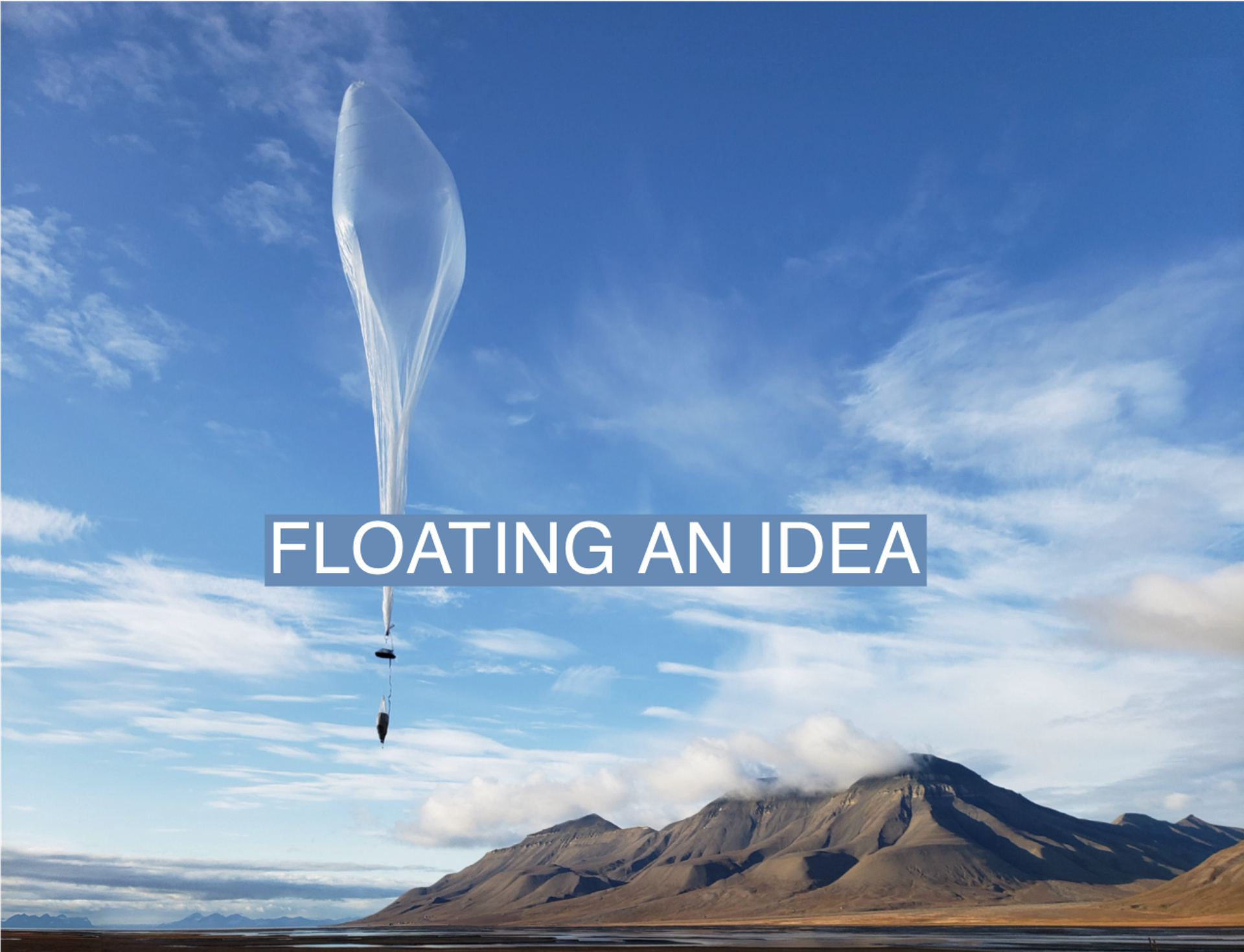The Scoop
A team of Stanford graduates in their 20s has overtaken tech giants like Huawei, Nvidia, and Google DeepMind in the competitive field of using artificial intelligence to predict the weather.
Startup WindBorne Systems announced Wednesday that it surpassed DeepMind, the current leader in AI weather prediction, in key benchmarks set by U.S. and European government weather models.
In an exclusive interview with Semafor, the co-founders of the firm, backed by Khosla Ventures and Footwork, said they used an in-air fleet of around 100 inexpensive, hand-built weather balloons made from plastic purchased from a restaurant supply company to gather granular data, which they then analyzed using the same AI techniques that power ChatGPT.
WindBorne has already earned millions of dollars in revenue by contracting with government agencies like the National Oceanic and Atmospheric Association and the U.S. Air Force. With the new forecasting capability, it plans to go after the commercial market.
Last week, a computer monitor at the company’s headquarters showed six of its balloons rafting toward California in an atmospheric river that was pummeling the southern part of the state. The data the balloons gathered was fed into the company’s algorithms, and to NOAA and the Scripps Institute of Oceanography as part of a research project.
WindBorne says its sensors could help governments better prepare for extreme weather events that can cause billions in damage, such as Hurricane Otis, which last year went from a blip on the radar to a full-blown hurricane in less than 24 hours.
Balloon capabilities were prominent in the news last year when the U.S. shot down what it claimed was a Chinese surveillance balloon over American land; Beijing said it was a weather balloon.
Know More
WindBorne’s WeatherMesh system takes advantage of two technology trends: The rapid evolution of AI algorithms and the precipitous decline in the cost and size of computer hardware and wireless equipment.
WindBorne’s weather balloons, which cost about as much to manufacture as an inexpensive mobile phone, can orbit around the earth for weeks, using AI to precisely control their paths. WindBorne says it already employs the world’s largest constellation of weather balloons, and will increase it 100-fold to 10,000 balloons, giving a tiny startup as much visibility into the earth’s weather systems as heavily funded government agencies.
“As far as I’m aware, this makes us the first company to apply AI-based weather forecasting at scale in the real world,” said WindBorne co-founder Kai Marshland, who said the company markets its forecasts to a wide variety of potential customers, from maritime shipping companies to energy traders. The technology could also provide valuable data to climate researchers and help businesses save fuel, thereby reducing emissions.
Traditional computer-based weather forecasts are based on physics models that create atmospheric simulations. They require massive amounts of compute power, and are much slower compared to newer methods that utilize a different approach: deep learning.
Instead of using physics to understand what is happening in the atmosphere, the deep learning technique takes in vast amounts of data, from wind speed to barometric pressure, and picks up on patterns and cues that would be impossible for a human to find. Once it’s been sufficiently trained, the model can look at real-time weather data and predict where those metrics are likely to go, even without any prior knowledge of physics.
In November, DeepMind announced that GraphCast, a model trained on 40 years of weather data, was more accurate than the European Centre for Medium-Range Weather Forecasts, which is known as the gold standard in weather modeling.
WindBorne says its WeatherMesh model is 11% more accurate than DeepMind’s in the key forecasting metrics.
Another benefit of using deep learning instead of physics models is that although they require a lot of compute power for the initial training of the model, they are relatively fast and cheap to run after that initial process. DeepMind’s GraphCast and WindBorne’s WeatherMesh can both run on consumer-grade computers, and can complete in a matter of seconds work that would usually require a supercomputer under traditional models.
WindBorne is using a transformer model, a deep learning technique pioneered by Google and used in large language models like ChatGPT, which use next-word prediction to complete a sentence. WindBorne uses it to project what comes next in a weather forecast.
The company says it plans to combine both deep learning and the physics model approach to gain an advantage. Using proprietary data gathered by its balloons, it plans to create its own physics models for certain regions and then use the output of those models as data to pre-train its deep-learning model creating more detailed weather forecasts over certain geographies.
Over the weekend, WindBorne conducted a simulation of how its WeatherMesh model would perform in predicting the path of Hurricane Ian, a Category 5 storm that wreaked havoc in the Southeastern U.S. in 2022. The model followed the storm so perfectly that employees at first thought something must have been off, like the hurricane itself made it into the training dataset, giving it an unfair advantage. But the numbers checked out; the traditional models were off by around 200 kilometers.

The Scene
On a recent sunny day in Palo Alto, WindBorne employees pumped helium through a homemade contraption and into a two-story balloon. Destined for roughly two-and-a-half trips around the earth, it unfolded and rose swiftly from a parking lot, narrowly missing a Sycamore tree.
“So say we all!” yelled a half dozen employees, a balloon launch tradition and a reference to the sci-fi TV series Battlestar Galactica, which combines two passions of the company: AI and space travel.
Several of WindBorne’s founders interned at SpaceX while at Stanford, but they didn’t have the resources — or regulatory approval — to launch their own rockets into space. Instead, they chose to focus on objects that can reach the outer atmosphere without breaking the bank or invoking international regulations.
During that time, WindBorne co-founder and CTO Andrey Sushko had set his sights on a competition for the longest latex balloon flight, modifying a traditional weather balloon so that it would release some helium before it got too high.
It made it from California to the Atlantic Ocean, breaking the record for the longest flight for a latex balloon. The students continued to improve the design, breaking their own milestones for several years.
Since WindBorne was founded in 2019, its weather balloons have rapidly gotten smaller, lighter, and cheaper. Once in the air and connected to communications satellites, they can only go up and down, but that is enough to guide them with an astonishing level of accuracy.
Reed’s view
WindBorne is a great example of a startup thinking big and small at the same time. Enveloping the planet with 10,000 weather balloons is an audacious plan, on top of using a bunch of cheap, off-the-shelf products to make a massive data collection tool.
Until recently, the overwhelming majority of data used for machine learning applications was not very useful, because it lacked the necessary structure and labeling.
The beauty of transformer models is that vast quantities of unstructured data can be mined for insights.
There are other, similar ideas that could be useful in solving some of the world’s biggest challenges. One idea is an “internet of the ocean” that would use floating sensors and autonomous vehicles to track a slew of data inputs that would be useful in climate research.
Room for Disagreement
Kim Wood, an associate professor of hydrology and atmospheric science at the University of Arizona, told Scientific American that AI weather prediction, because of its reliance on past data, lacks the ability to predict never-before-seen weather events.
“The events it sees most often [in training data], it’s going to be best at capturing. So on average, it’s probably pretty good,” Wood said. “But the kind of events that can change peoples’ lives forever—maybe it would struggle more with that.” Those “rare” events are becoming more commonplace as the climate changes, Wood noted, so accurately capturing and predicting them is increasingly important.
The View From Europe
If you can’t beat ‘em, join ’em. That’s the view at the gold standard European Centre for Medium-Range Weather Forecasts. The organization has been experimenting with machine learning-based weather predictions for years now and sees a future where both physics-based models and deep learning models are combined to improve weather forecasting.
Notable
- WindBorne’s hope is that it can help mitigate climate change in several ways with better weather prediction. Another approach: actually changing the weather. This article in The Wall Street Journal details how scientists are experimenting with once-taboo methods of cooling the planet.
